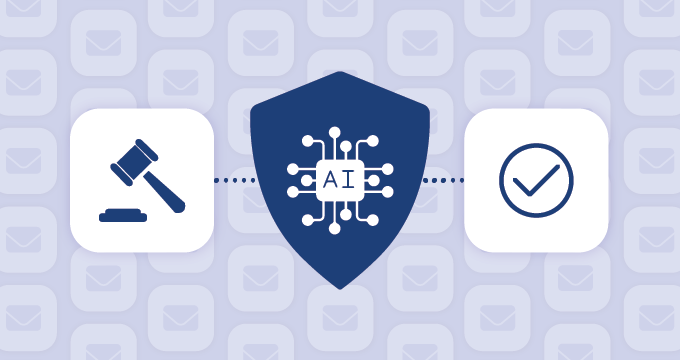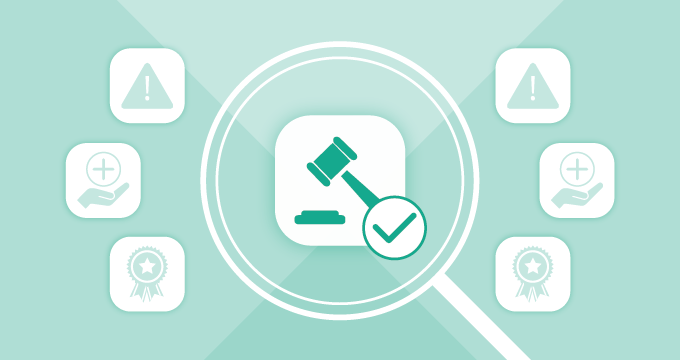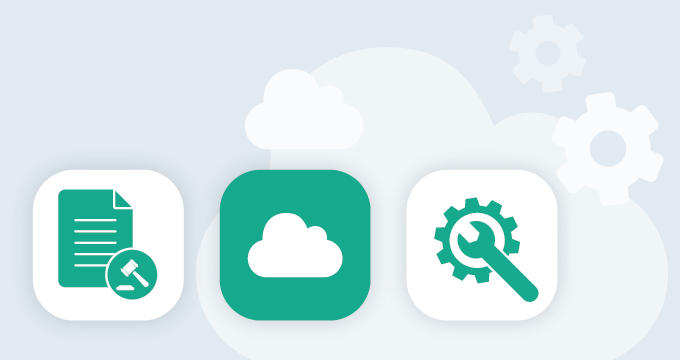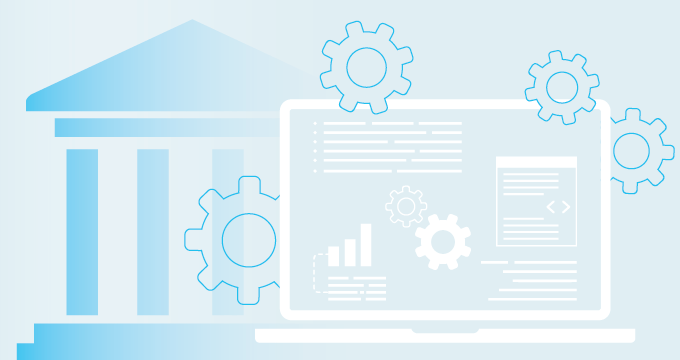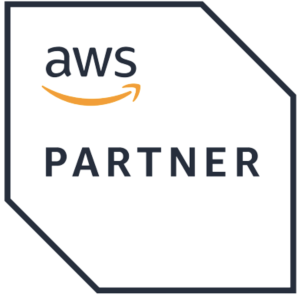AI has moved from experimental labs to the center of compliance operations. With fresh mandates taking effect, AI is rapidly transforming compliance operations. According to the latest McKinsey Global Survey, AI adoption rose from around 50% over the past six years to 72% in 2024.
This surge is evident in the compliance space and is driven by the increasing complexity of regulatory environments, expanding data volumes, and the need for more efficient risk management. A recent PwC Global Compliance Survey has shown that 85% respondents say compliance requirements have become more complex over the past three years.
This post breaks down what matters, why now, and the exact steps every organization can take to stay ahead.
We’ll discuss:
- What is AI in compliance
- The regulatory backdrop and high-impact use cases
- Implementation considerations
What Is AI in Compliance?
AI in compliance refers to the strategic use of artificial intelligence technologies to enhance, automate, and optimize compliance processes across organizations.
Rather than being the subject of compliance oversight, AI becomes a powerful tool that helps compliance professionals navigate complex regulatory requirements, detect violations, and maintain adherence to evolving rules more effectively than traditional manual methods.
The application of AI in compliance transforms how organizations approach regulatory challenges:
- ML algorithms can analyze vast datasets to identify patterns that might indicate compliance violations, fraud, or breaches that human reviewers could easily miss.
- Natural language processing (NLP) capabilities enable AI systems to continuously monitor regulatory updates across multiple jurisdictions, automatically flagging changes that impact specific business operations.
One of the most impactful applications is AI-driven ediscovery. In response to litigation or regulatory inquiries, organizations often need to sift through thousands — sometimes millions — of emails, chat logs, and documents. AI streamlines this process by identifying relevant content, eliminating duplicates, and highlighting potentially privileged or responsive material. What once took weeks of manual review can now be handled in hours, with greater accuracy and lower cost.
Predictive analytics further empowers compliance teams by helping them anticipate potential issues before they escalate into violations, allowing for a shift from reactive to proactive compliance management.
The Regulatory Pressure on IT and Compliance Teams
Organizations operating in regulated industries like financial services or government are under growing pressure to meet stringent compliance obligations.
For IT and compliance teams, the burden is intensifying due to a convergence of challenges — a shortage of skilled professionals, increasing regulatory complexity, and expanding data environments.
Shortage of compliance professionals and regulation frequency
Across industries, there is a well-documented talent shortage in compliance and data governance roles. This shortage means existing staff are often stretched thin, managing both day-to-day operations and long-term risk mitigation strategies. At the same time, new regulations are introduced frequently, while existing ones are updated with tighter deadlines and more granular requirements.
Without automation or advanced tooling, IT and compliance professionals face a growing list of manual tasks — data classification, retention policy enforcement, audit preparation, and incident response. The result is slower response times, reduced accuracy, and a greater chance of missing regulatory deadlines.
Common regulatory mandates in the U.S.
Every sector faces its own compliance framework, often with overlapping or conflicting mandates. Among the most commonly referenced in regulatory audits and investigations:
- HIPAA — Applies to healthcare providers and mandates the protection and confidentiality of electronic Protected Health Information (ePHI).
- FERPA — Governs access to student education records, impacting public and private K-12 schools and post-secondary institutions.
- FOIA and state equivalents — Requires government entities to respond to public records requests within set timelines, while protecting sensitive information through redactions.
- FINRA — Regulates U.S. brokerage firms and exchange markets, enforcing strict rules for electronic communications monitoring and archiving.
- SOX — Imposes requirements on publicly traded companies for financial transparency, internal controls, and record retention, with IT systems playing a central role.
These mandates are not optional. They define legal obligations that organizations must comply with, regardless of staff availability or system complexity.
Risks of non-compliance
Failure to comply can have immediate and long-lasting consequences:
- Financial penalties — HIPAA violations, for example, can result in fines ranging from $100 to $50,000 per violation, capped at $1.5 million annually. FINRA regularly issues fines in the millions for improper email supervision or record retention.
- Reputational damage — News of a compliance breach, especially those involving sensitive data or public record mishandling, can significantly damage public trust, particularly in education and government sectors.
- Operational disruption — Investigations, audits, and lawsuits consume time and resources. Organizations may be forced to halt projects, divert IT staff, or overhaul systems on short notice.
Together, these three factors underscore why IT and compliance teams are actively looking for scalable solutions to help manage risk, monitor activity, and respond to regulatory demands with confidence.
Use Cases of AI in Regulatory Compliance
AI is transforming compliance operations by increasing efficiency, reducing manual labor, and helping organizations stay ahead of potential violations.
While each sector and regulation presents unique challenges, AI technologies are being applied in consistent, value-driven ways across industries.
Automated data classification
Organizations handle massive volumes of structured and unstructured data, much of which must be stored, protected, or deleted based on regulatory requirements.
AI-powered classification tools can automatically identify and tag sensitive information, such as protected health information (PHI) under HIPAA, student records under FERPA, or financial statements subject to SOX.
This automation:
- Reduces the risk of human error in classification.
- Ensures that data is routed to appropriate storage or retention workflows.
- Enhances access control by clearly labeling restricted or confidential content.
Real-time monitoring and alerts
AI can continuously scan emails, instant messages, file transfers, and user activity to detect signs of non-compliance. This is especially valuable in industries like finance, where communication monitoring is mandatory under FINRA.
Examples include:
- Flagging prohibited phrases or patterns indicating insider trading.
- Detecting unauthorized access attempts or unusual file movements.
- Triggering real-time alerts for immediate investigation.
These proactive monitoring capabilities reduce the chance of regulatory breaches going unnoticed.
FOIA and public record request management
State and local government agencies often face high volumes of open data (FOIA) requests, each requiring swift and accurate handling. AI supports compliance by:
- Scanning documents and emails for sensitive or exempt information.
- Automatically redacting content that should not be disclosed (e.g., personal data, legal content).
- Organizing and assembling files for timely release.
This not only speeds up response times but also minimizes the risk of accidental disclosure.
Ediscovery acceleration
Responding to legal holds or internal investigations can be time-consuming and costly. AI helps by:
- Quickly analyzing large volumes of emails, documents, and communications.
- Filtering out irrelevant or duplicate content.
- Highlighting items likely to be relevant or privileged.
This drastically shortens ediscovery cycles, reduces legal costs, and improves the accuracy of document production.
Audit preparation and reporting
Audits require detailed records that demonstrate compliance with internal policies and external regulations. AI simplifies audit readiness by:
- Aggregating data from various systems into clear audit trails.
- Identifying missing documentation or gaps in logging.
- Generating compliance reports that meet regulatory formats and standards.
- Creating transcriptions of voice calls, virtual meetings, and video content, making them searchable and reviewable for compliance.
With AI, teams can maintain a continuous state of audit readiness, instead of scrambling to gather records on demand.
Policy enforcement and training insights
Beyond monitoring, AI can interpret behavioral patterns and policy adherence across departments. This enables compliance teams to:
- Spot recurring violations or areas of weak policy enforcement.
- Recommend specific training or policy updates based on observed trends.
- Measure the effectiveness of compliance initiatives over time.
By tying insights directly to workforce behavior, AI supports a more targeted, data-driven approach to compliance training and risk management.
Sector-Specific Applications of AI in Regulatory Compliance
Different industries face unique compliance requirements, and AI technologies are increasingly being tailored to meet these sector-specific demands. Whether it’s safeguarding student data, monitoring financial transactions, or ensuring medical record confidentiality, AI enables organizations to manage regulatory obligations more efficiently and proactively.
K-12 Education
Schools and districts are responsible for protecting student information under FERPA, managing growing volumes of digital communications, and ensuring compliance with public records laws. AI tools are playing a bigger role in education IT environments by:
- Monitoring email and chat communications — AI can scan digital interactions between students, teachers, and administrators to flag potential FERPA violations or detect red flags related to bullying, harassment, or threats to student safety.
- Managing retention schedules —AI can identify different categories of student records, attendance logs, report cards, and disciplinary actions, and automatically apply the appropriate retention or deletion policies based on district or state guidelines.
This automation supports both compliance and student welfare without overloading already stretched IT teams.
Financial services
Financial firms operate under intense regulatory scrutiny from bodies such as FINRA, the SEC, and the CFPB. Compliance failures in this space often result in high-profile enforcement actions. AI is being used to:
- Enable trade surveillance —Machine learning algorithms analyze vast amounts of trade data to detect patterns indicative of market manipulation, insider trading, or unusual trading behaviors.
- Automate transaction monitoring and regulatory reporting — AI systems help monitor financial transactions in real time for AML (Anti-Money Laundering) compliance and generate reports that meet strict formatting and submission requirements.
By incorporating AI, financial institutions can reduce false positives, focus investigations on real risks, and stay ahead of complex reporting timelines.
Healthcare
HIPAA mandates strict controls over patient data, and healthcare organizations face ongoing challenges in securing electronic Protected Health Information (ePHI). AI supports HIPAA compliance by:
- Auditing clinical documentation —AI tools review electronic medical records and clinical notes to ensure that documentation standards are met and that access to patient information is appropriate and traceable.
- Securing data access and encryption — AI helps enforce access controls by recognizing abnormal login behavior or file access attempts. It also supports real-time decisions about encryption based on content sensitivity and user roles.
This helps healthcare providers avoid breaches, protect patient trust, and comply with ever-evolving data privacy rules.
State and local government
Public agencies must balance transparency with privacy, particularly when handling FOIA requests or managing internal records. AI-driven solutions are becoming more common for:
- FOIA request automation and redaction — AI can quickly review and redact confidential information from records before release, helping agencies meet statutory response deadlines and avoid unintentional data exposure.
- Policy compliance in archiving — Government agencies are subject to a wide range of records retention and archiving laws. AI can scan and classify documents and communications, ensuring they are stored or deleted according to applicable policies.
Leveraging AI can help government offices improve operational efficiency while maintaining public trust and legal compliance.
Implementation Considerations
Introducing AI into compliance operations isn’t simple.
It requires careful planning, strong data governance, and ongoing oversight to ensure the technology delivers real value without introducing new risks. Below are the core factors organizations must consider when adopting AI for regulatory compliance.
Data quality and governance prerequisites
AI systems rely on historical data to function effectively, whether for classification, monitoring, or prediction. Poor data quality can result in inaccurate outputs, false positives, or overlooked violations.
To prepare for AI deployment:
- Ensure that data is accurate, consistently formatted, and up to date.
- Establish clear governance policies around who can access, modify, or delete compliance-related data.
- Maintain detailed metadata and audit trails to support AI training and output validation.
Without this foundation, AI tools may reinforce existing data errors or fail to deliver usable insights.
Selecting AI vendors with compliance expertise
Not all AI vendors understand the nuances of regulatory compliance. Choosing a partner with deep experience in your industry is critical.
Look for vendors who:
- Can demonstrate knowledge of relevant regulations (e.g., HIPAA, FERPA, SOX, FINRA).
- Offer transparent documentation on how their AI models work and how outputs are validated.
- Provide tools for role-based access control, audit logging, and retention policy enforcement.
The right vendor should also support compliance during implementation, helping you map workflows, assess risks, and configure systems for your specific requirements.
Integration with existing archiving and security systems
AI solutions are most effective when they’re not operating in silos. Seamless integration with your existing infrastructure, especially archiving, data loss prevention, and identity management systems, is essential for compliance automation.
Key questions to address:
- Can the AI system ingest data from your current email and file archiving tools?
- Does it support secure APIs for data exchange and system alerts?
- Will it align with your existing authentication and encryption frameworks?
Integration reduces friction, enhances system-wide visibility, and ensures AI-enhanced processes don’t disrupt core operations.
Ongoing oversight and bias mitigation strategies
AI systems must be monitored and refined continuously. Compliance isn’t static, and neither should your AI tools be. Organizations need to build in feedback loops, audits, and regular reviews to ensure accuracy and fairness.
Recommended practices include:
- Regularly evaluating AI outputs for false positives and missed violations.
- Updating models based on regulatory changes or new internal policies.
- Implementing bias detection protocols to ensure that protected classes or sensitive groups are not inadvertently impacted by AI decisions.
Compliance teams should treat AI as a supervised tool, valuable, but requiring constant human review and governance to avoid unintended outcomes.
Summary of the Main Points
Here are key takeaways from the article if you need a shorter version:
- AI in compliance refers to the use of technologies like machine learning and natural language processing to automate and enhance regulatory processes and compliance readiness.
- Organizations are using AI to shift from reactive to proactive compliance management by detecting risks and violations earlier.
- Regulatory demands are growing while compliance and IT teams face staffing shortages and expanding data obligations.
- Non-compliance can lead to steep financial penalties, reputational harm, and operational disruptions.
- AI is now widely applied in compliance for tasks such as data classification, communication monitoring, FOIA request handling, ediscovery, audit reporting, and policy tracking.
- Specific regulated industries like financial services, healthcare, and the public sector are customizing AI tools to meet their unique regulatory requirements.
- Implementing AI in compliance requires strong data quality, careful vendor selection, system integration, and continuous oversight.
If your organization is exploring how to use AI to strengthen compliance, streamline ediscovery, and manage regulatory risk more effectively, contact us at sales@jatheon.com or book a demo to see how Jatheon’s AI-enhanced archiving and compliance solutions can support your team.
FAQ
What are the risks of using AI in compliance?
Risks include potential bias in AI models, inaccurate results from poor data quality, and limited transparency in decision-making. Human oversight and proper governance are essential to ensure AI supports, rather than undermines, compliance goals.
What should you consider before implementing AI for compliance purposes?
Key considerations include data quality, vendor expertise, system integration, and a plan for ongoing oversight. Successful AI use depends on strong governance and aligning tools with your specific regulatory environment.
Which industries benefit most from implementing AI?
Sectors like education, finance, healthcare, and government gain significant value. These industries manage high data volumes and strict regulations, and AI helps them meet compliance obligations more efficiently and cost-effectively
